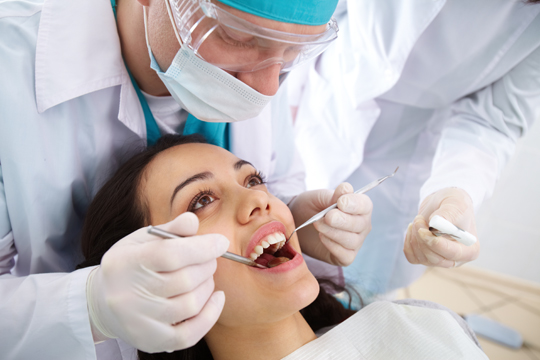Duties and Responsibilities: is the first specialty of dentistry that is concerned with the study and treatment of malocclusions (improper bites), which may be a result of tooth irregularity, disproportionate jaw relationships, or both. Orthodontic treatment can focus on dental displacement only, or can deal with the control and modification of facial growth. In the latter case it is better defined as "dentofacial orthopaedics".
Salary: orthodontist salary in the United States is about $127,000 per annum. The median salary in hourly terms is about $61 per hour
Education: Early Education
Aspiring orthodontists are required to earn their high school diploma or GED. Coursework in anatomy, chemistry, physics, biology and anatomy is encouraged. Taking a foreign language is also helpful, since orthodontists treat patients from various nationalities.
Bachelor's Degree
Applicants to dental school are first required to earn a bachelor’s degree from an accredited college or university. Although there is no subject major requirement, students typically major in biology or chemistry, as dental schools are more likely to accept applicants with a science background. Toward the end of their junior year, undergraduate students with the intention of applying to dental school must pass the DAT (Dental Acceptance Test). These scores help determine whether you’ll be accepted. Other factors that affect whether students will be accepted to dental school include a high GPA, glowing letters of recommendation and involvement in volunteer/ extracurricular activities.
Related Reading: Qualifications to Become an Educational Audiologist
Dental School
Dental school lasts a total of four years, and is broken into two distinct phases of class/ lab work and supervised clinical practice. According to the Bureau of Labor Statistics, the first two years of dental school include coursework in anatomy, periodontology, radiology and local anesthesia. During the final two years, students gain real life practice in clinical settings under the careful supervision of licensed dentists. Upon graduation from dental school, future orthodontists are awarded the Doctor of Dental Medicine degree, or DMD. However, graduates are still required to pass the National Board Dental Examinations administered by the Joint Commission on Dental Examinations to receive a state license to practice dentistry.
Graduate School
Since orthodontics is a specialty within dentistry, aspiring orthodontists must enroll in a graduate program accredited by the Commission on Dental Accreditation, or CODA, for specialized training and additional practice. Depending on their specific career goals, students can earn a master’s degree or Ph.D. in orthodontics, or a master’s degree in oral science or oral biology. During the graduate program, students will have to examine, diagnose and treat real-life patients.
Certification
Orthodontists are required to pass written and clinical examinations administered by the American Board of Orthodontics. To qualify for the exam, students must present proof of graduating from a CODA accredited orthodontic program.
Add a picture:

Reflection: I would not become this because its too much work and the pay comes so often
No comments:
Post a Comment